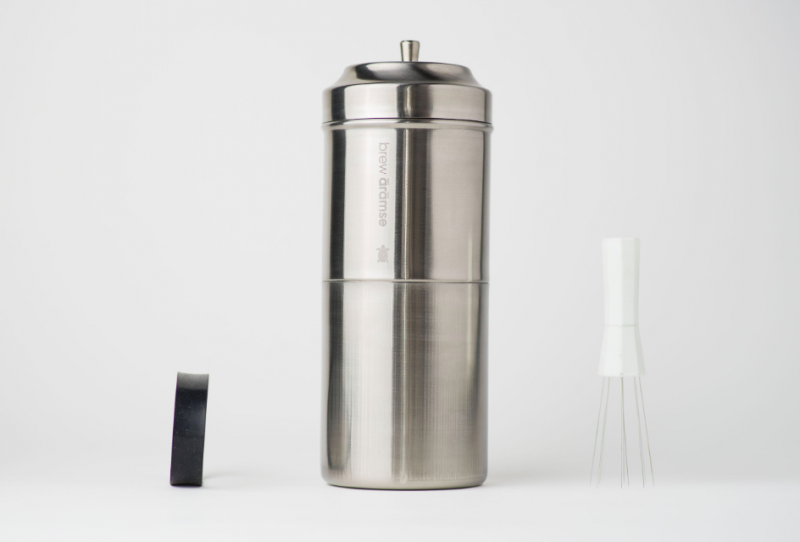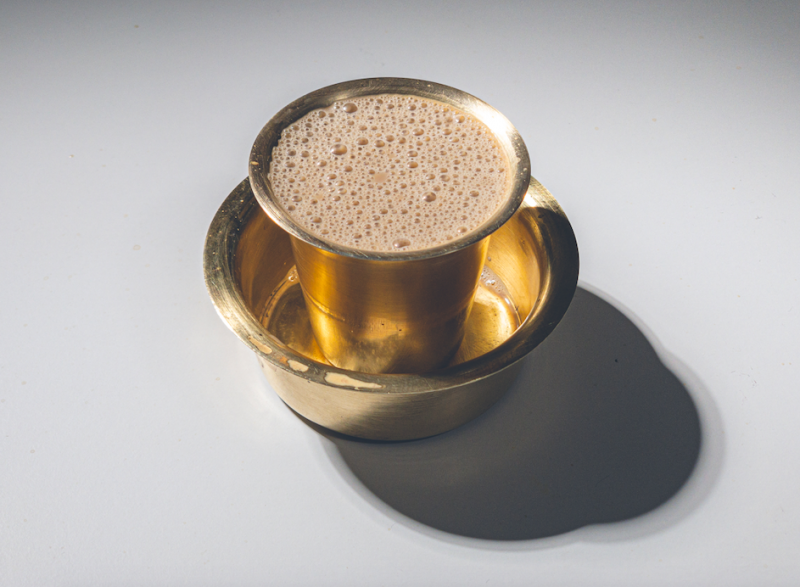Beating the drum for coffee
Coffee is a powerful social lubricant — often forming the basis of friendships, romances and other significant life moments. In a world that is too easily divided, coffee, much like music, has the power to bring together communities that transcend language and geography.
Words by Namisha Parthasarathy of ARAMSE
If your favourite song played through your earphones right now, you’d likely start tapping your foot to the beat, and if it’s a real banger maybe even start shimmying your shoulders without realising. Rhythm is all around us, and the science is slowly discovering that it may be hardwired into us, making it a universally defining characteristic of being human. It extends well beyond music, and is even an integral part of brewing coffee. When you are brewing Tetsu Kasuya’s (World Brewers Cup Champion 2016) 4:6 V60 recipe and pouring 40% of your water in the first two pours, what you’re really doing is keeping the beat.
THE WORLD OF COFFEE RECIPES
Through our company ārāmse, we create content with the aim of making specialty coffee more inclusive and accessible. Part of this includes challenging popular notions of what brewing methods are typically associated with specialty coffee. In this vein, a project close to our hearts has been creating a space for the South Indian filter, a little known brewer outside India, in today’s world of modern coffee.

The first phase of this ongoing project was to discover the perfect recipe, or come as close to it as possible. In this slow-drip percolation brewer, hot water is poured onto a bed of coffee, ground anywhere between espresso to Turkish fine. The drip chamber has small holes arranged in concentric circles, and a thick coffee concentrate, called decoction, drips into the bottom collection chamber. The decoction is then used in combination with milk, to brew a traditional filter kaapi.

Excited by the possibility of sharing a South Indian filter coffee recipe with a global audience, our predicament was two-fold — first, to brew coffee with the filter using modern coffee paraphernalia and tools which can ensure repeatability, and second, to communicate the recipe to a large audience, a lot of whom were unaware of this style of brewing. The resulting 10 minute YouTube video is one of our most watched videos, but it came with the realisation that there is no easy way to communicate the recipe simply, without requiring someone to watch the entire video, and likely making their own notes.
Specialty coffee and its precision brewing methods have captured the fascination of people across the globe. Much of the current wave of coffee’s draw is consistency — the ability to repeat a brew if you so desire, by tightly controlling variables. It makes recipe sharing fun, and no longer restricts coffee communities by geography. But our problem in sharing the South Indian filter recipe wasn’t a unique one. As avid followers of coffee professionals such as Scott Rao, Morgan Eckroth, James Hoffmann and others, we noticed that recipes for most other brewing techniques are documented in a similar fashion. They require either sifting through verbose text on a blog or website, or watching a long video outlining the precise steps sequentially. And the task doesn’t end here. For it to be put into practice, you either need to memorise the recipe, make your own notes or be faced with the unwieldy task of stopping, starting and replaying different parts of a video.
MUSIC IS ALL AROUND US
Enter music. Raghunath and I are a couple that was brought together by music, so it is unsurprising that we often look to it for inspiration in other aspects of our lives. Prior to being coffee YouTubers, we had a slightly less popular passion project as music YouTubers. So, we were quick to make the connection several years on. Coffee brewing, and the notes of a musical piece have a lot more in common than may appear on the surface. Inspired by sheet music, and MIDI notes on a piano roll, we created The Universal Coffee Recipe Builder, first posted in May, 2020.
Traditional sheet music is written on staves, horizontal lines and spaces that represent pitch. Symbols are placed on these staves, at different points in time, to document a musical piece. A simplified digital version of this are MIDI notes on a piano roll. Simply put, MIDI (Musical Instrument Digital Interface), is a technical standard that allows different musical instruments to communicate with each other and/or a computer. MIDI music is visually represented using a piano roll, essentially a graph where the x-axis represents time, and the y-axis are the keys of a piano arranged vertically, representing pitch. Horizontal bars placed at different pitches and various points in time, visually represent a piece of music. Additional information like the duration of a note, and velocity (how hard or soft it was played) are communicated by the width of these bars and the colours respectively.
THE UNIVERSAL RECIPE BUILDER
Putting these two together, ‘The Universal Recipe Builder’ was created. This builder was created with the intention of being a brewer agnostic system, allowing coffee enthusiasts and professionals to build and share coffee brewing recipes in a standardised way. Much like music, all brews consist of events of varying duration that happen at different points in time. The universal recipe builder lays out these events in a sequence over a period of time, making it easy to follow along. Quantities, colour coding and additional note sections make it incredibly versatile, with users now having the opportunity to build a vast library of recipes for almost any brewer.
HOW DO YOU USE IT?
THE LANGUAGE OF COFFEE
Coffee is a powerful social lubricant — often forming the basis of friendships, romances and other significant life moments. In a world that is too easily divided, coffee, much like music, has the power to bring together communities that transcend language and geography. This tool is a work in progress that we hope will eventually contribute to that goal. The recipe builder has a diverse potential user base, ranging from home enthusiasts to professionals and large corporations.
For example, coffee companies with branches across multiple states and even countries, can use the universal recipe builder to train baristas to brew house recipes. Easily printable, it can be pinned up on the wall of your cafe, even serving as an interesting conversation starter with patrons. With very limited text, it makes crossing language barriers easier, minimising communication errors. Conversely, a home enthusiast can quickly convert any recipe of their choice into this system. The recipe builder allows for recipes to be referenced whilst brewing, thereby minimising the requirement of either awkwardly stopping and starting a video or constantly scrolling through lines of text. The absence of complex symbols to record events is a conscious design choice, requiring just scribbles to quickly jot down a recipe. (Pic 5)
As coffee professionals increasingly examine the barriers we have unwittingly created between a consumption culture concentrated in the Global North versus the Global South’s association with the production of raw coffee, the recipe builder is one lens through which we can bring people closer together, irrespective of location.
With a system such as this, its applicability and versatility increases exponentially with the number of people that use it, enabling it to become somewhat of an industry standard. After the initial overwhelmingly positive response to our YouTube video, the next milestone is to create a digital platform where different input variables can be entered, and a recipe is output with ease. Our early versions are constantly being improved upon, and in future versions we also hope to use design thinking to tackle the current bare minimal language requirements. At ārāmse, we believe in the power of community over the power of individuals. Staying true to this, The Universal Recipe Builder project is open source.
Coffee nerds everywhere ceremoniously look forward to ‘The Ultimate [insert brewer] Recipe’ videos, usually packed with engaging, entertaining and valuable content. The universal recipe builder allows you to synthesise information dispersed in a 12 minute video into a quick doodle. Taking it a step further, imagine a world where James Hoffmann or Wendelien van Bunnik (World AeroPress Champion 2019) experiment with a new recipe for their morning brew, sketch it quickly using the universal recipe builder system to post to their Discord communities in exchange for feedback. You can experiment with it that very morning, and the start of a new dialogue is born.